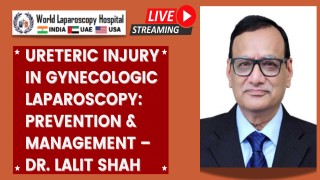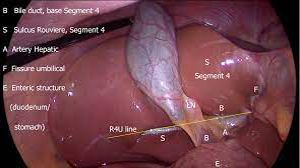Revolutionizing Gallbladder Stone Treatment: Exploring Minimally Invasive Surgical Techniques
Add to
Share
813 views
Report
1 year ago
Description
In the realm of surgical innovation, the treatment of gallbladder stones has undergone a remarkable transformation through the application of minimally invasive surgical techniques. This revolutionary approach has revolutionized the management of gallbladder stones, offering patients a range of benefits while minimizing the impact on their daily lives. Gallbladder stones, also known as cholelithiasis, have traditionally been treated through open cholecystectomy, a procedure involving a large abdominal incision. However, with the advent of minimally invasive surgery, specifically laparoscopic cholecystectomy, a new era has emerged in the field of gallstone treatment. Laparoscopic cholecystectomy, the gold standard for gallbladder stone removal, involves the use of specialized instruments and a high-definition camera inserted through small incisions in the abdominal wall. This allows surgeons to visualize and access the gallbladder with precision, while minimizing trauma to surrounding tissues. Compared to open surgery, laparoscopic cholecystectomy offers numerous advantages, including reduced postoperative pain, shorter hospital stays, faster recovery times, and improved cosmetic outcomes. The procedure begins with the insufflation of the abdominal cavity with carbon dioxide gas, creating a pneumoperitoneum that provides ample space for optimal visualization and maneuverability. Trocars are then inserted to introduce the laparoscopic instruments, including a camera and specialized surgical tools. The surgeon skillfully navigates through the abdominal cavity, identifying the gallbladder and its associated stones. One of the key advantages of minimally invasive surgical techniques lies in their ability to address gallbladder stones effectively. With the aid of the high-definition camera and magnified views, surgeons can precisely manipulate the instruments to perform a meticulous dissection of the gallbladder, allowing for the complete removal of stones. This minimizes the risk of stone recurrence and ensures optimal patient outcomes. The benefits of minimally invasive techniques extend beyond the immediate surgical intervention. Patients who undergo laparoscopic cholecystectomy experience less postoperative pain, resulting in reduced reliance on pain medications. The smaller incisions minimize tissue trauma, leading to faster recovery times and a quicker return to normal activities. Additionally, the improved cosmetic outcomes of minimally invasive surgery contribute to a higher level of patient satisfaction and confidence. Furthermore, the use of minimally invasive techniques in gallbladder stone treatment has also shown to reduce the incidence of postoperative complications. These complications, such as wound infections and incisional hernias, are significantly lower in laparoscopic cholecystectomy compared to open surgery. The reduced risk of complications translates to improved patient safety and overall healthcare outcomes. Collaboration among healthcare professionals plays a pivotal role in advancing the field of minimally invasive gallbladder stone treatment. Surgeons work closely with anesthesiologists, radiologists, and other specialists to ensure comprehensive preoperative evaluation, accurate diagnosis, and optimal surgical planning. This multidisciplinary approach facilitates better patient outcomes and a seamless continuum of care. As technology continues to evolve, further advancements in minimally invasive surgical techniques for gallbladder stone treatment are expected. Robotic-assisted surgery, with its enhanced precision and dexterity, holds promise for even more refined interventions. Additionally, ongoing research efforts aim to improve patient selection criteria, refine surgical techniques, and evaluate long-term outcomes, leading to continued advancements in the field. The revolution in gallbladder stone treatment through minimally invasive surgical techniques has not only transformed patient experiences but has also revolutionized the field of surgery as a whole. By embracing these innovative approaches, surgeons can effectively address gallbladder stones while minimizing the physical and emotional burden on patients. Beyond the immediate advantages, the long-term benefits of minimally invasive techniques in gallbladder stone treatment are significant. Patients who undergo laparoscopic cholecystectomy often experience improved digestion and reduced symptoms associated with gallbladder dysfunction. The removal of gallstones eliminates the risk of complications such as cholecystitis (inflammation of the gallbladder), choledocholithiasis (stones in the common bile duct), and gallstone pancreatitis. This not only improves patient quality of life but also reduces the need for future interventions or emergency procedures. Minimally invasive surgical techniques also present a favorable option for high-risk patients who may not be suitable candidates for traditional open surgery. Patients with underlying medical conditions, advanced age, or obesity can benefit from the reduced stress on the body associated with minimally invasive procedures. The shorter hospital stays and faster recovery times translate to fewer hospital-acquired infections and a quicker return to daily activities, allowing these patients to resume their normal lives with minimal disruption. Moreover, the success of minimally invasive techniques in gallbladder stone treatment has paved the way for outpatient or same-day surgery options. Select patients with uncomplicated gallbladder stones can undergo laparoscopic cholecystectomy and return home on the same day, eliminating the need for overnight hospital stays. This not only reduces healthcare costs but also enhances patient convenience and satisfaction. Collaboration and training among surgeons are crucial for the widespread adoption and success of minimally invasive techniques in gallbladder stone treatment. Surgeons undergo specialized training to master these techniques and stay updated with the latest advancements. Continuous education and mentorship ensure that surgeons can provide the highest standard of care to patients, optimizing surgical outcomes and patient safety. As with any surgical procedure, there are certain limitations to consider. Minimally invasive techniques may be challenging in cases of severe inflammation, extensive scarring, or complex anatomical variations. In such instances, open surgery or alternative approaches may be necessary to ensure the best possible outcomes. Surgeons' expertise and judgment play a vital role in evaluating individual patient factors and tailoring the treatment approach accordingly. Looking to the future, ongoing research and technological advancements hold promise for further refining minimally invasive techniques in gallbladder stone treatment. The integration of robotics, enhanced imaging modalities, and surgical navigation systems may provide surgeons with even greater precision and control. Additionally, the development of new instruments and innovative approaches will continue to expand the possibilities for minimally invasive procedures, further benefiting patients. In conclusion, the revolution in gallbladder stone treatment through minimally invasive surgical techniques has reshaped the landscape of surgical care. By embracing these approaches, patients can experience reduced pain, faster recovery, improved outcomes, and enhanced quality of life. With ongoing advancements and collaborative efforts, the future of gallbladder stone treatment is undoubtedly bright, offering patients a safer, more effective, and patient-centered approach to regaining their health and well-being.
Similar Videos





